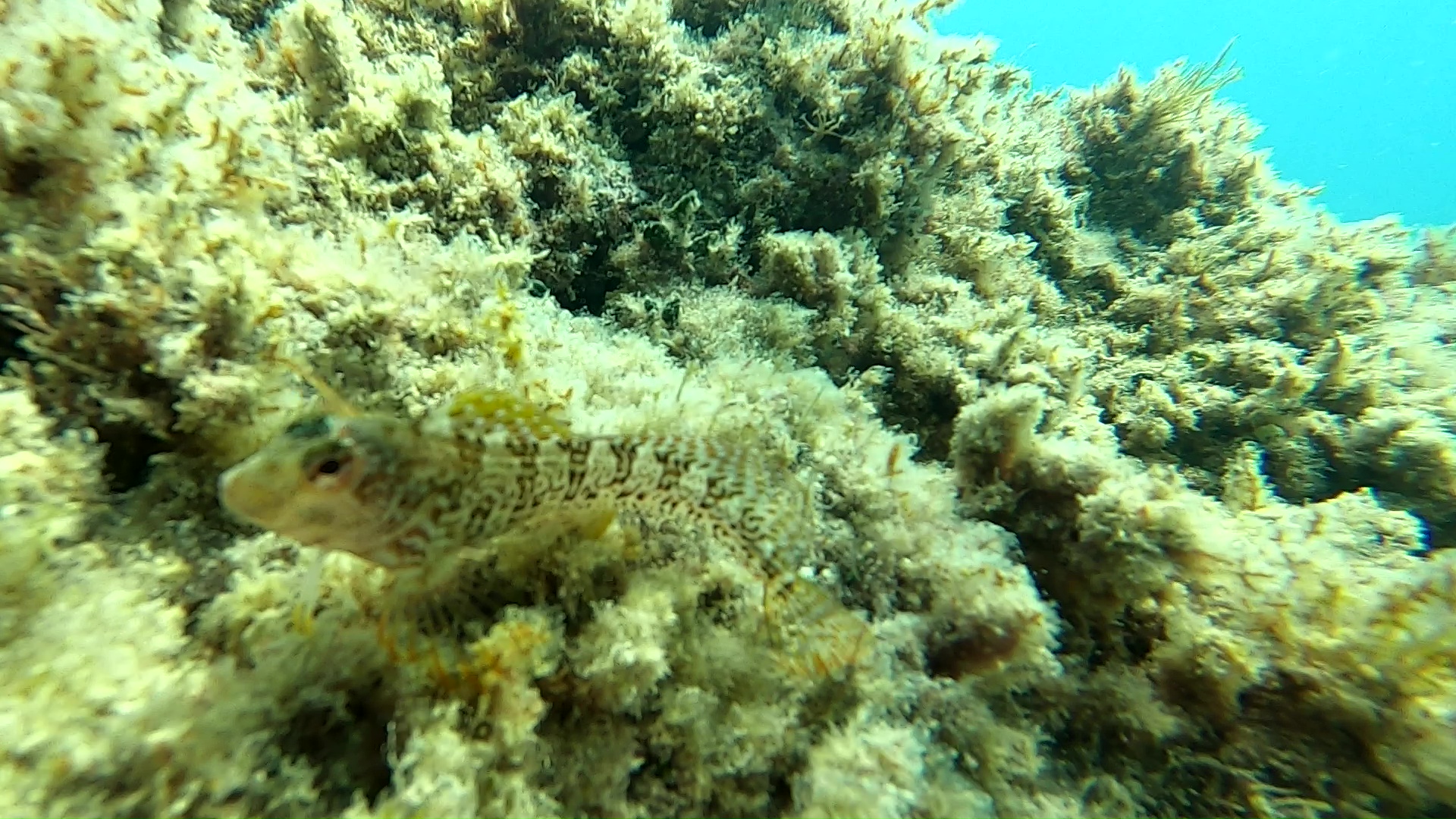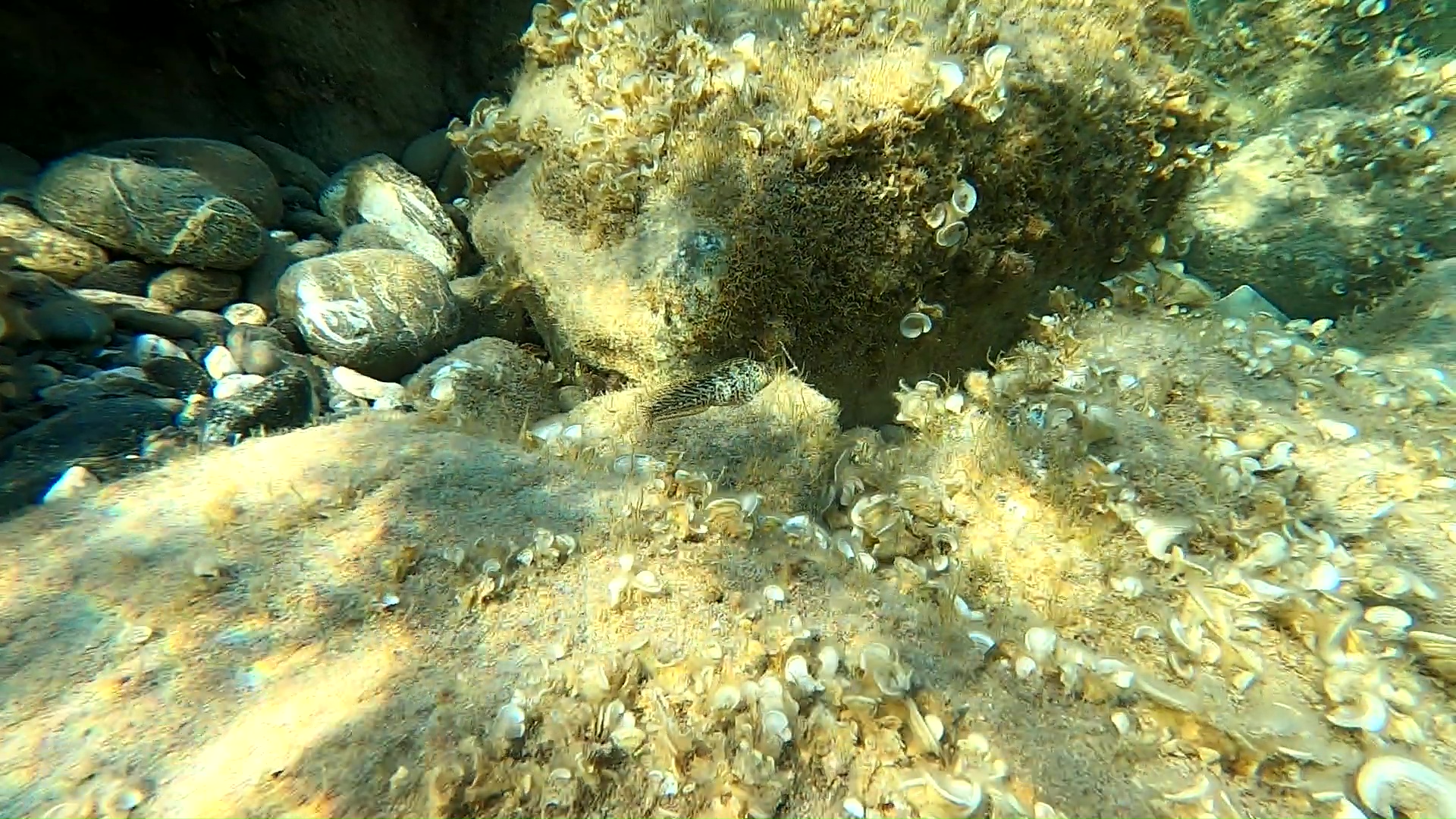Bavosa mediterranea - Parablennius incognitus
The Mediterranean Mystery blenny (Parablennius incognitus) is a sea fish belonging to the Blenniidae family. Bavosa mediterranea Parablennius incognitus Blenniidae intotheblue.it

Distribution and habitat
It is an endemic species of the Mediterranean Sea. Its presence in the Black Sea is to be ascertained.
It lives in very shallow waters, often in areas exposed to the fury of the waves, on rocky surfaces rich in vegetation.

Description
Similar to Parablennius zvonimiri. The supraorbital tentacles are made up of a longer front strand from whose back 4 or 5 ramifications branch off; these tentacles are much longer in the male. The nasal tentacle (only on the anterior nostril) has two filaments. For the rest a typical blennide, the dorsal fin has a modest central indentation.
The livery, although variable as in almost all the blennidi has some specific characteristics:
dark spots in the shape of hourglasses edged with blue lines on the sides a dark oblique stripe on the cheek above which there is a lighter one. Males in love have bright, yellow or orange colors.
Riproduzione
Similmente agli altri blennidi il maschio cura le uova che vengono deposte in una tana.
Alimentazione
Soprattutto basata su Crostacei, principalmente Cirripedi.
https://it.wikipedia.org/wiki/Parablennius_incognitus
Reproduction
Similar to the other blennids the male treats the eggs that are laid in a den.
Supply
Above all based on Crustaceans, mainly Cirripeds. Bavosa mediterranea Parablennius incognitus Blenniidae intotheblue.it
https://it.wikipedia.org/wiki/Parablennius_incognitus
Generally benthic fish, combtooth blennies spend much of their time on or near the bottom. They may inhabit the rocky crevices of reefs, burrows in sandy or muddy substrates, or even empty shells. Generally found in shallow waters, some combtooth blennies are capable of leaving the water for short periods during low tide, aided by their large pectoral fins which act as “feet”. Small benthic crustaceans, mollusks, and other sessile invertebrates are the primary food items for most species; others eat algae or plankton.
Gallery
Video Gallery

